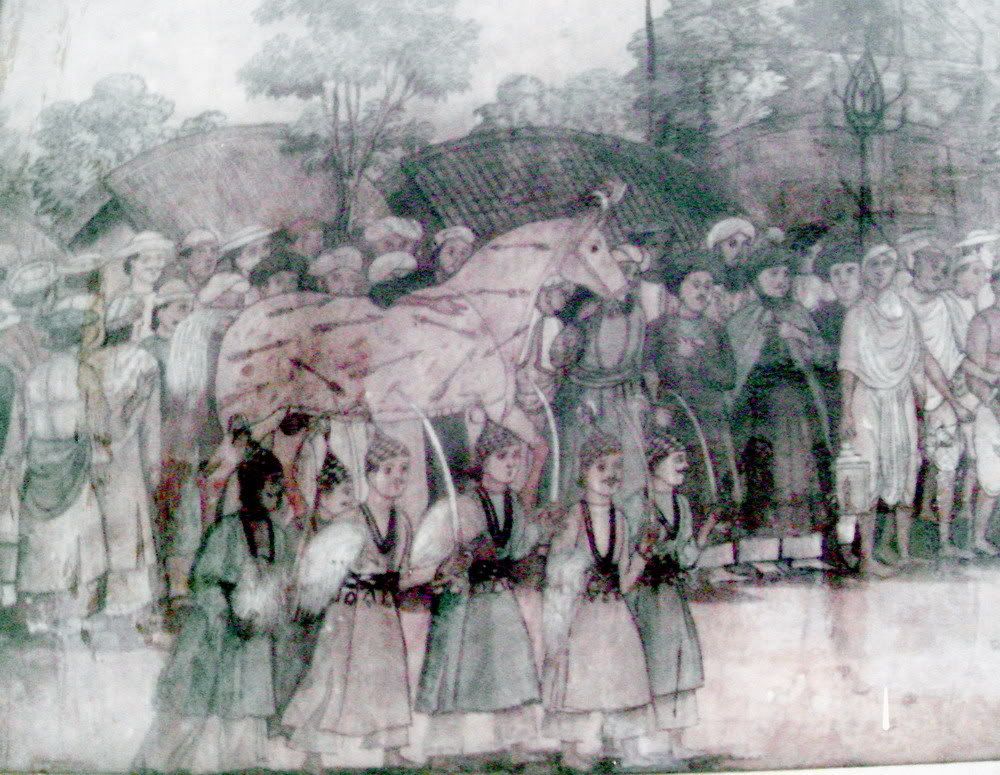
Dr.Mazhar
Naqvi
Thanks to the
generosity of an aristocrat, Bangladesh National Museum now probably has the
best collection of watercolor paintings of British Bengal, portraying Muharram
processions in Dhaka. Drawn in 19th century, these paintings were in
the possession of Khan Bahadur Abul Hasnat who donated them to museum after its
curator Professor Ahmed Hasan Dani made a courtesy call to the aristocrat. Khan
Bahadur treated him with a lavish meal and then showed him the rare paintings.
Then, much to the astonishment of the curator, he said” Professor Dani, you can
take them and they are yours”. A grateful curator accepted his offer and even
though the museum was short of space, Professor accommodated them in one of the
galleries somehow as a mark of respect to the generosity exhibited by
Hasnat.

There
are total 17 paintings that portray Muharram processions. They are of the
average size of 24x 18 inches. Mystery shrouds the painter of the series. It is
generally believed that Alam Musawwir painted them but Najma Khan Majlis in the
book “Dhaka-Past,Present ,Future” thinks otherwise."A close examination of
the minute details, difference of techniques and styles shows that a number of
painters must have collaborated in these paintings", Majlis claims.
Further, Musawwir means painter and so mention his name could just be
epithet. Even scarce details are not available about lifer and works of
Musawwir. The material available just suggests that he was a contemporary of Naib
Nazim Nusrat Jung (1785-1823).As Jung was an art connoisseur, it is also
believed that he might have behind the commissioning of these paintings. The
blogger has already written about Musawwir in an earlier post under the caption”
Muharram in Colonial Paintings”.

The
paintings say a lot about the society and culture of those times, making them a
must-see for those interested in the history of Dhaka - routes, buildings and attires of people. The paintings depict more
or less all men walking barefooted with ‘Tazia’. In some paintings, beggars
are seen asking for alms whilst women and children watch over from their houses.
Englishmen and Half-naked Sadhus are also seen. The predominance use of red,
blue, ochre, beige and sepia palette with a visible influence of European and
oriental elements is considered to be another unique feature of these
paintings.

Details
available with the museum also reveal that before landing in the custody of
Khan Bahadur, these paintings were in possession of Nawab Shaista Khan’s
family. These paintings amply demonstrate as to how grand Muharram processions
used to be in Dhaka and how they are taken out on a subdued note in the recent
years. The paintings also remind the participation of people from all walks of
life in the Muharram processions in contrast to attendance of mostly Imamis
now. These changes have occurred in Dhaka due to emergence of orthodox
religious clerics who have been working with the agenda of removing Hussaini Ideology
from Bangladesh at the instance of petrol-rich Muslims nations under the
influence of Wahabism. It was they who had masterminded blast at Hussaini Dalan,
the symbol of Imami faith in Bangladesh.

Hussaini Dalan with Devotees Hours before Blast.
(References available on request. Photo Courtesy Google Images)
(References available on request. Photo Courtesy Google Images)
No comments:
Post a Comment